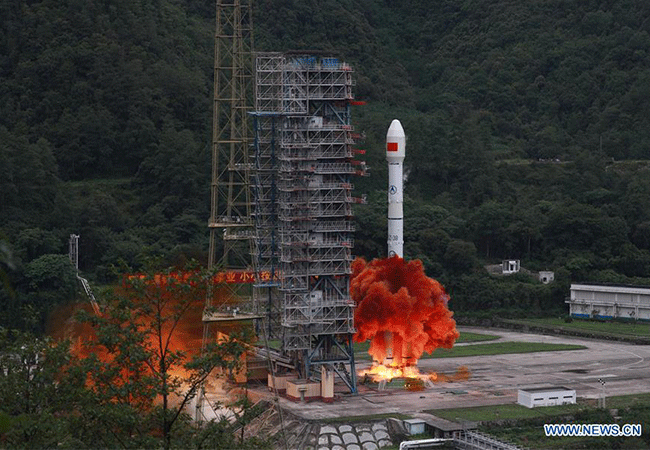China launches last BDS satellite to complete global navigation constellation

A carrier rocket carrying the last satellite of the BeiDou Navigation Satellite System (BDS) blasts off from the Xichang Satellite Launch Center in southwest China's Sichuan Province, June 23, 2020. China launched the last BDS satellite from the Xichang Satellite Launch Center at 9:43 a.m. on Tuesday (Beijing Time). (Photo by Hu Xujie/Xinhua)
China launched the last satellite of the BeiDou Navigation Satellite System (BDS) on Tuesday, marking the completion of the deployment of its own global navigation system.
The satellite, the 55th in the family of BeiDou that means "Big Dipper" in Chinese, was launched at 9:43 a.m. (Beijing Time) and sent into the preset orbit by a Long March-3B carrier rocket from the Xichang Satellite Launch Center in southwest China's Sichuan Province.
The mission, the 336th by the Long March rocket series, was a "complete success," the launch center said.
The satellite, designated to enter the geostationary earth orbit (GEO), was the last one of the BDS-3 system, which started to offer countries and regions along the Belt and Road as well as the world basic navigation service in December 2018.
BDS is one of four global navigation satellite systems in the world. The other three global navigation systems are GPS of the United States, Galileo of the European Union, and GLONASS of Russia.
China has been actively encouraging the cooperation and exchanges between the BDS system and other navigation systems in fields such as construction and application, strengthening compatibility and interoperability, resource sharing, and providing users with more qualified, diversified, safe and reliable services.
Compared with other global systems in the world, the design of the BDS constellation is unique, including medium earth orbit (MEO), inclined geosynchronous orbit (IGSO) and GEO satellites.
The BDS-3 system consists of a total of 30 satellites, including 24 MEO satellites, three IGSO satellites and three GEO satellites.
The three GEO satellites, including the newly launched one, can help significantly enhance the overall technical indicators of the BDS-3 system, according to the satellite developer China Academy of Space Technology (CAST).
They feature two distinctive creations of the BDS system -- active positioning and short message communication, CAST said.
The short message communication capability of the BDS-3 system has been improved 10 times. Users of the system can send a message of 1,200 Chinese characters at one time, as well as pictures, a useful function in emergencies.
Active positioning, employing radio measurement technology, can provide the locations of the users, not only to themselves, but also to relevant parties who are monitoring the users' whereabouts, through the joint efforts of two GEO satellites.
The function is widely used in search and rescue, fishing and other fields to help guarantee people's safety.
The BDS system provides navigation signals of multiple frequencies, and is able to improve service accuracy by using combined multi-frequency signals.
It also integrates navigation and communication capabilities for the first time, and can provide services of navigation, short message communication, satellite-based augmentation, international search and rescue, as well as precise point positioning.
"BDS provides time-and-space location benchmarks, which will have a great influence on the country's social and economic development, as well as people's lives," said Chen Zhonggui, chief designer of the BDS-3 satellites at CAST.
"It will also lay the foundation for new infrastructure construction, an important direction for China's development in the next stage," Chen said.


